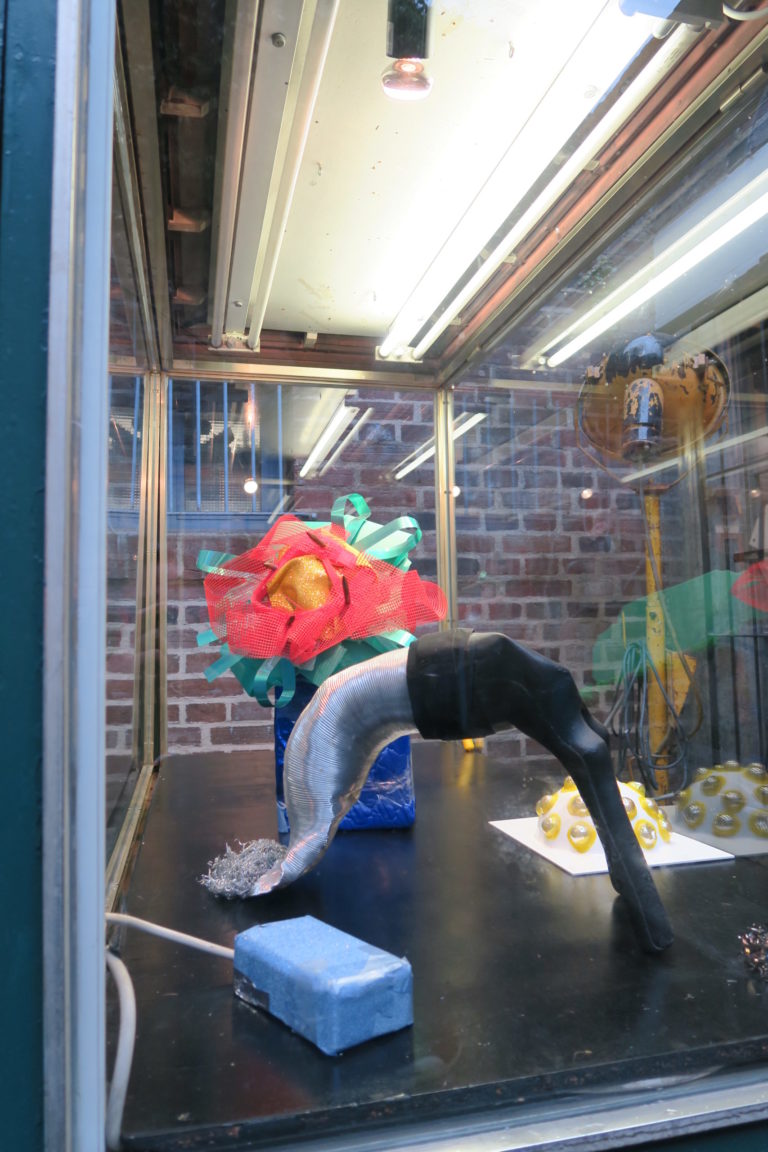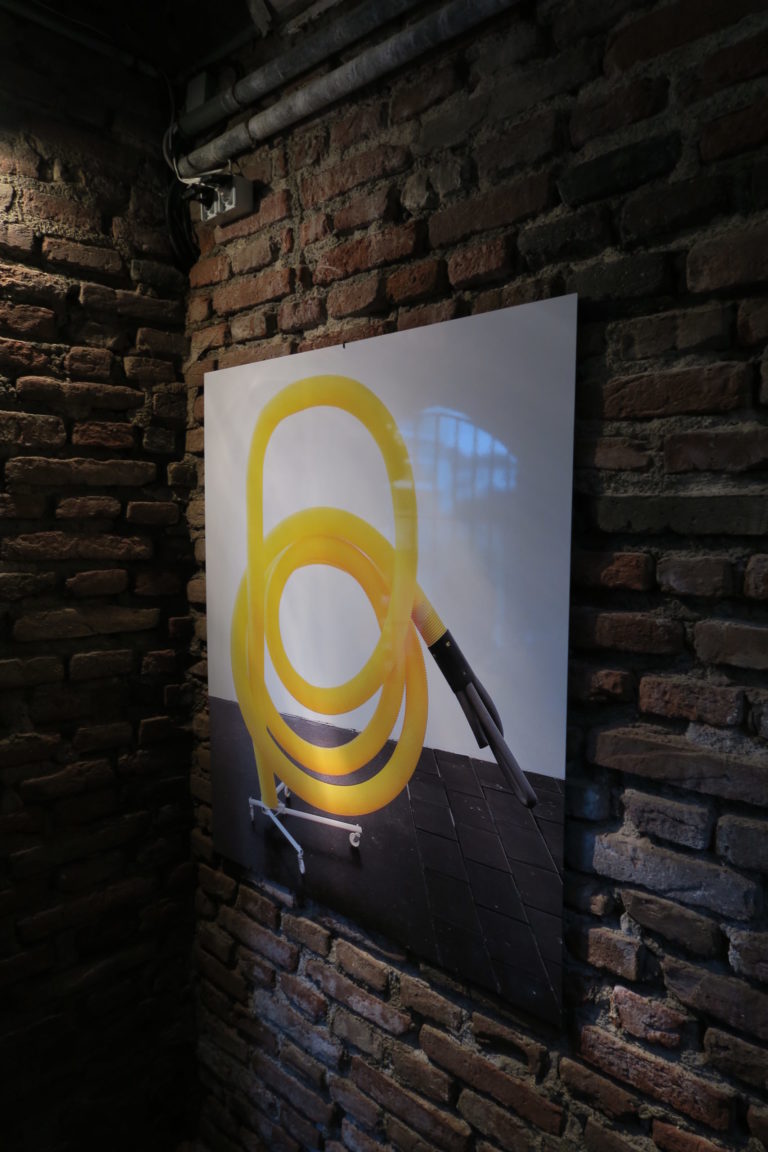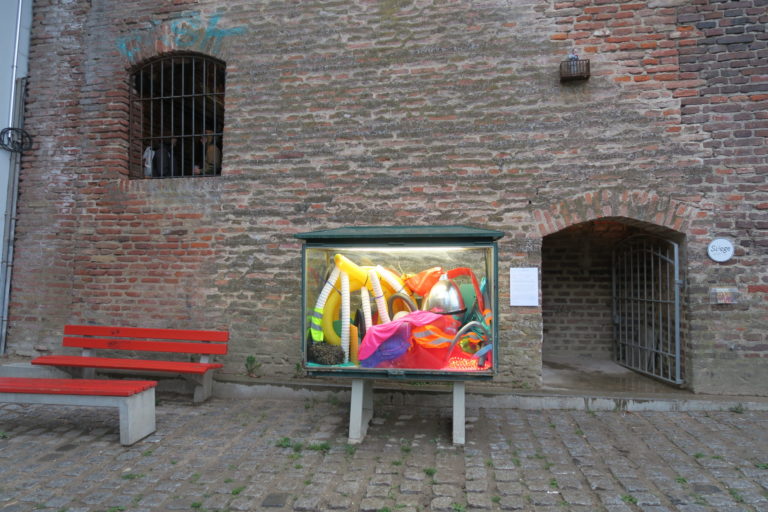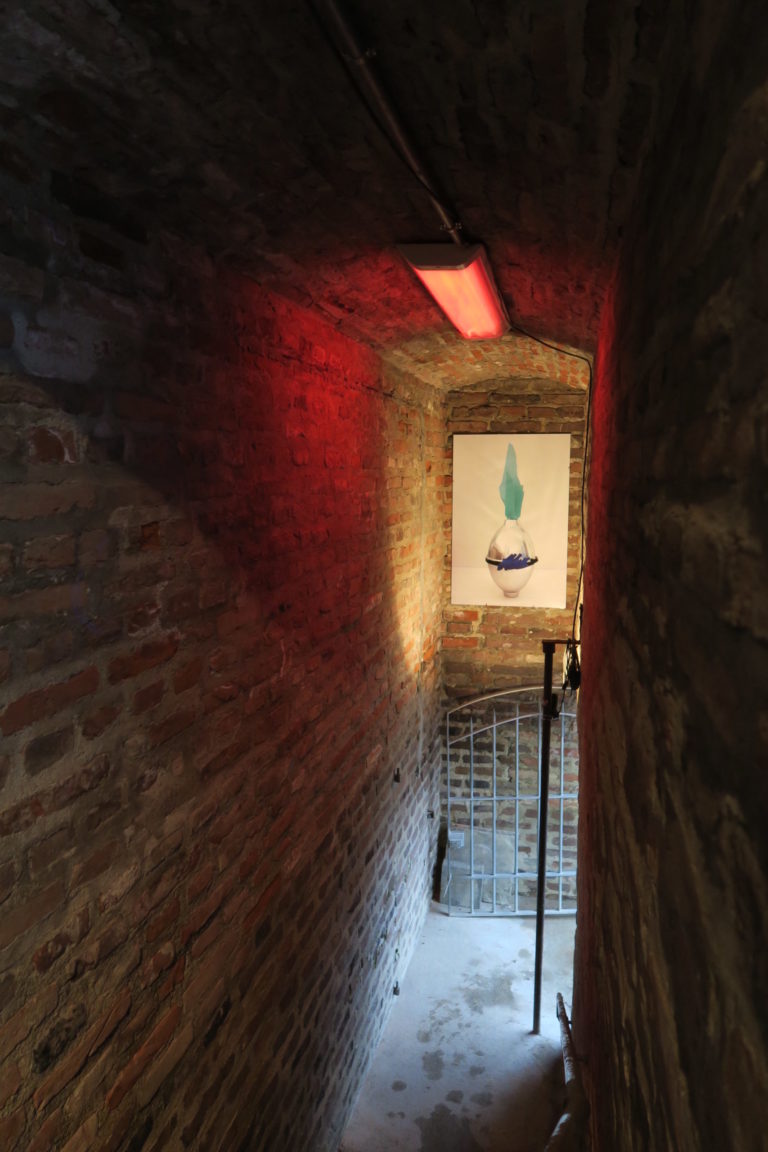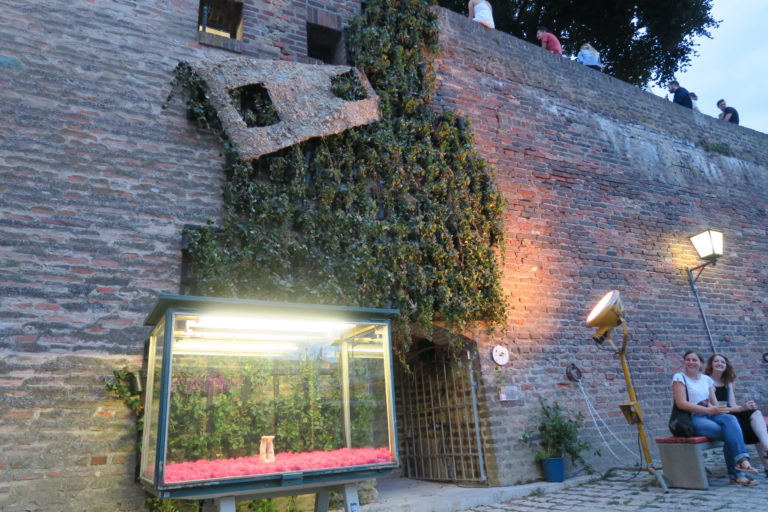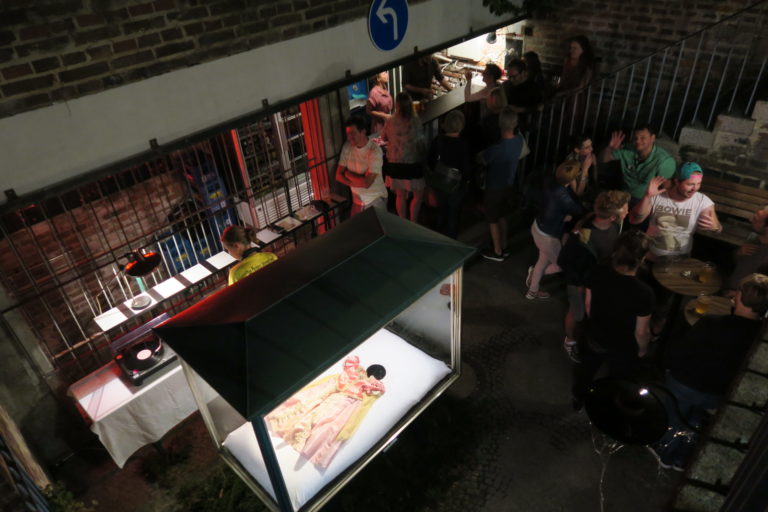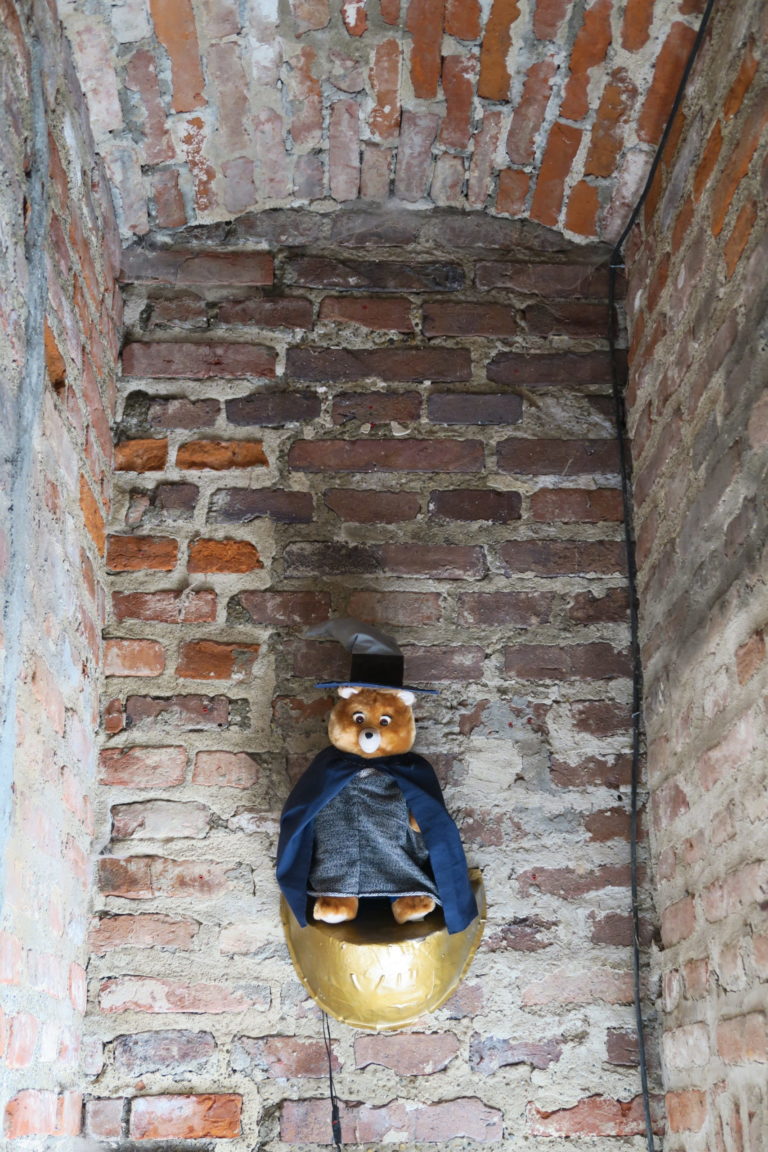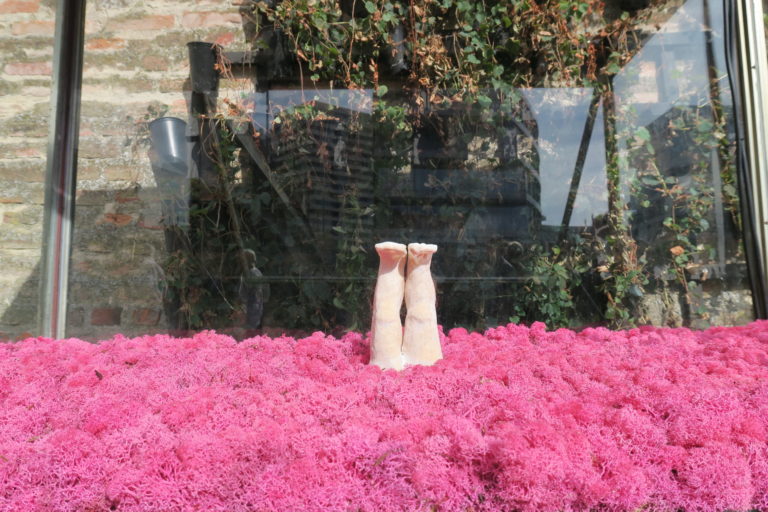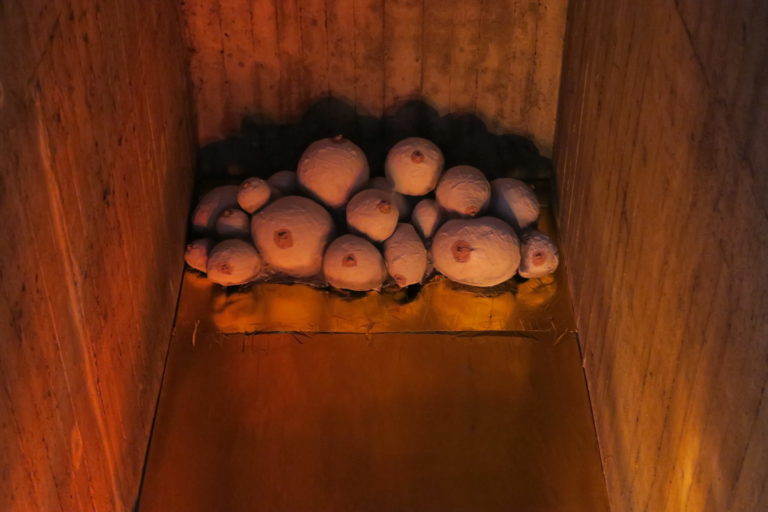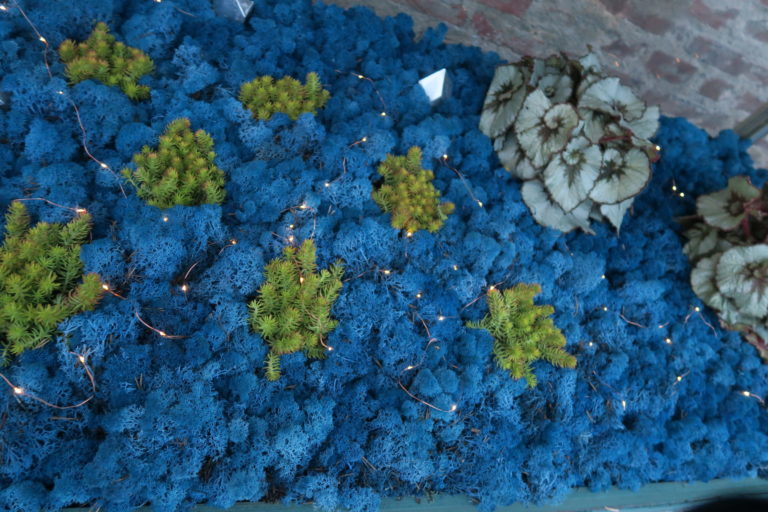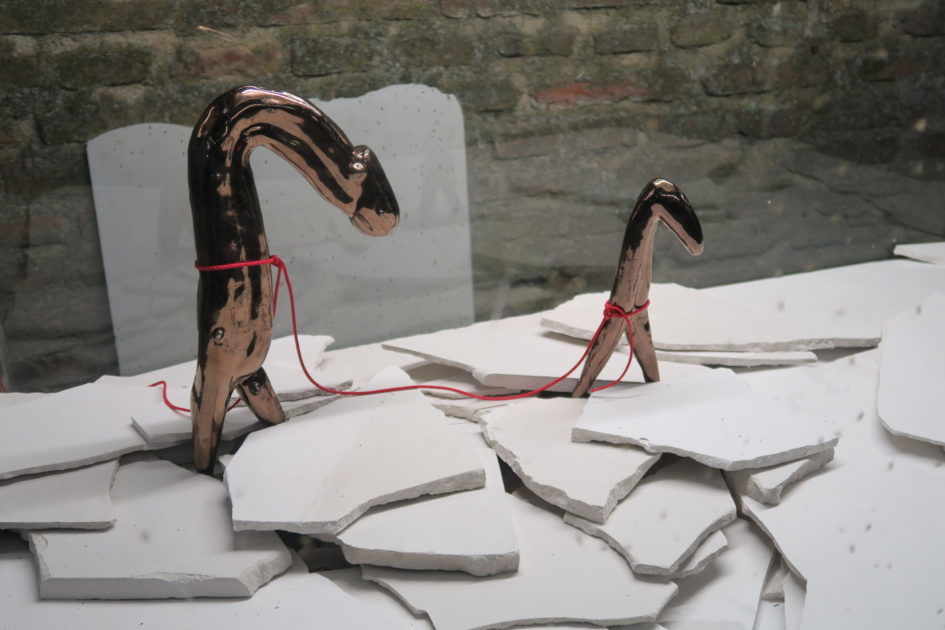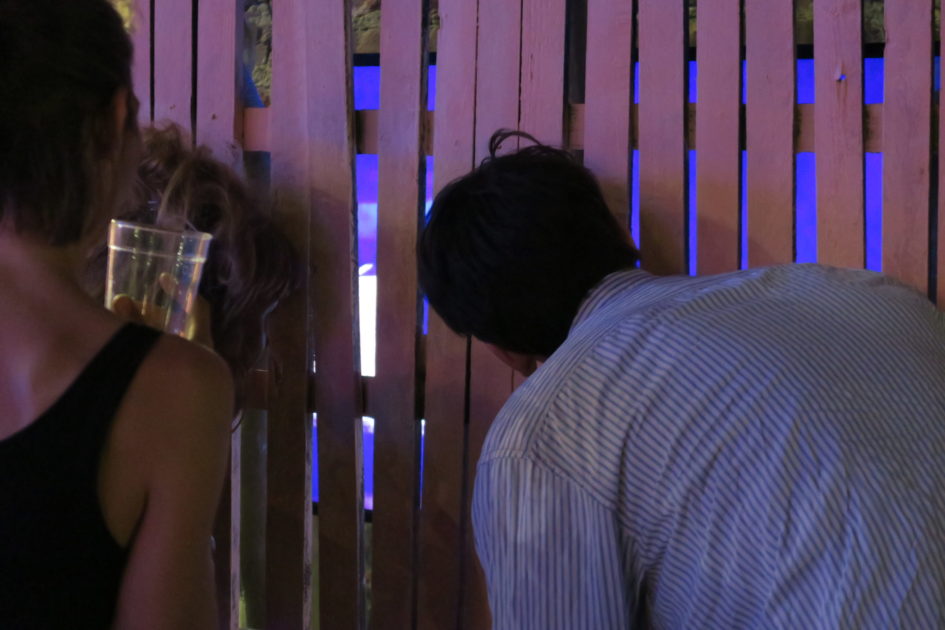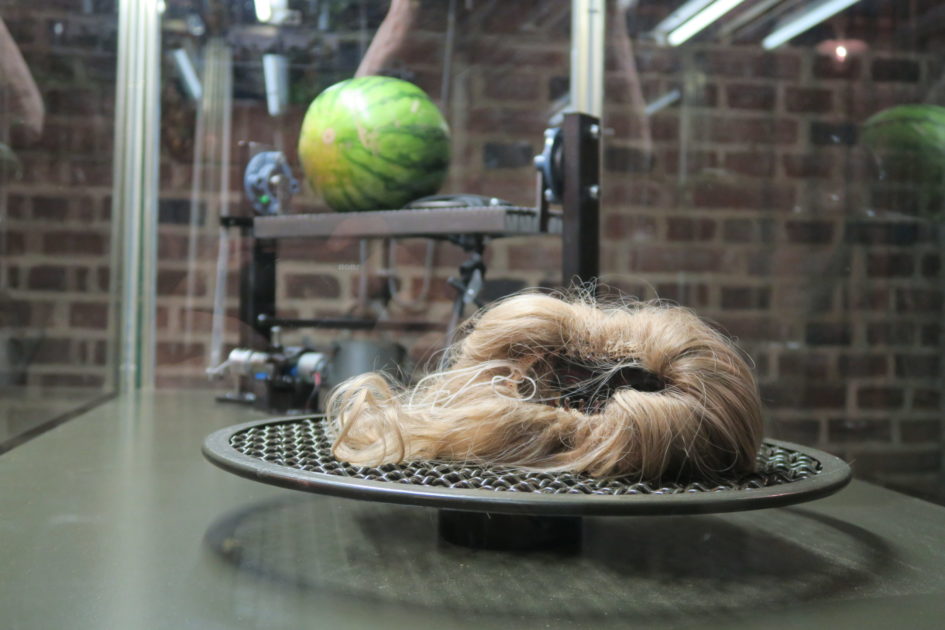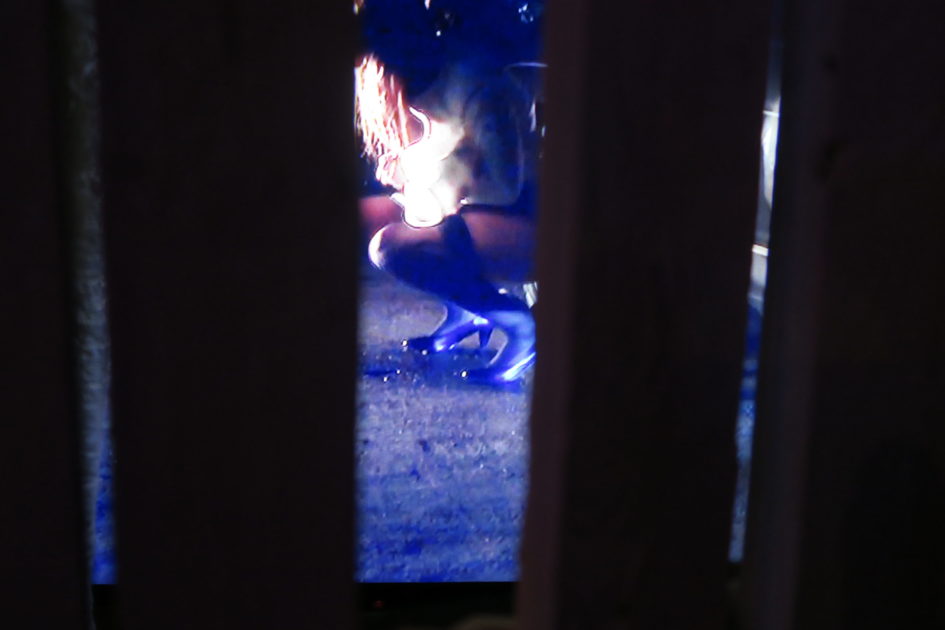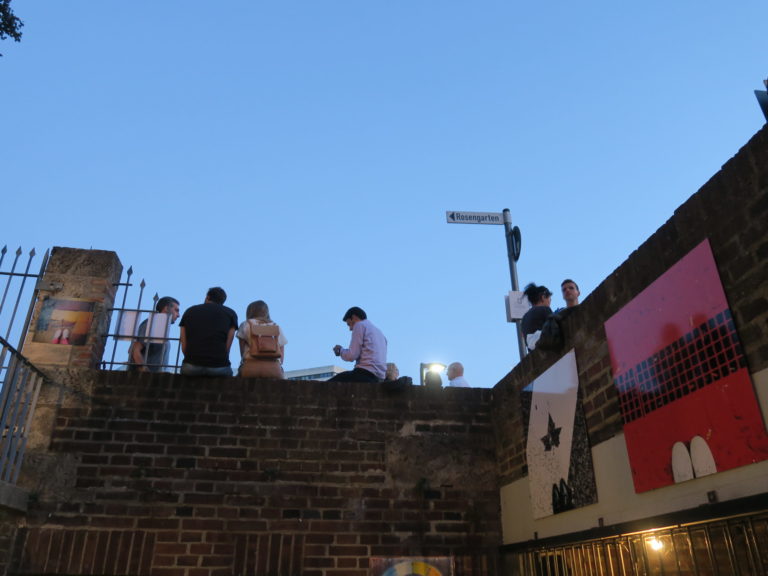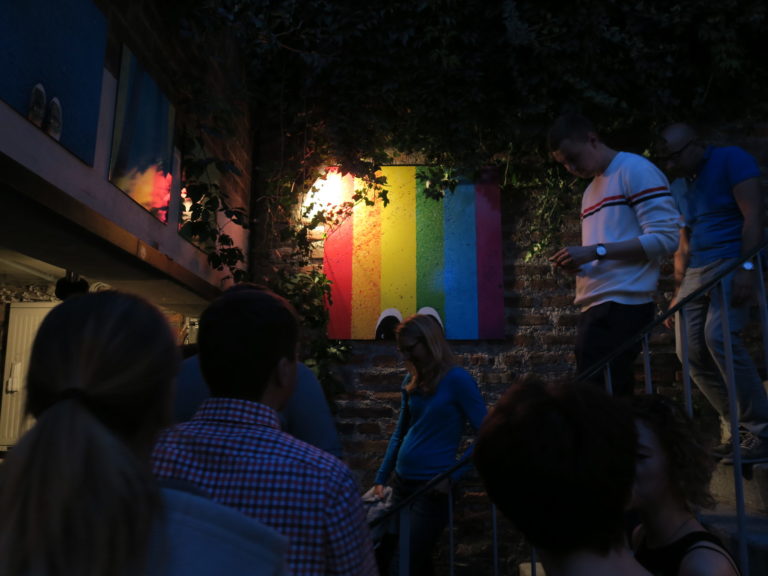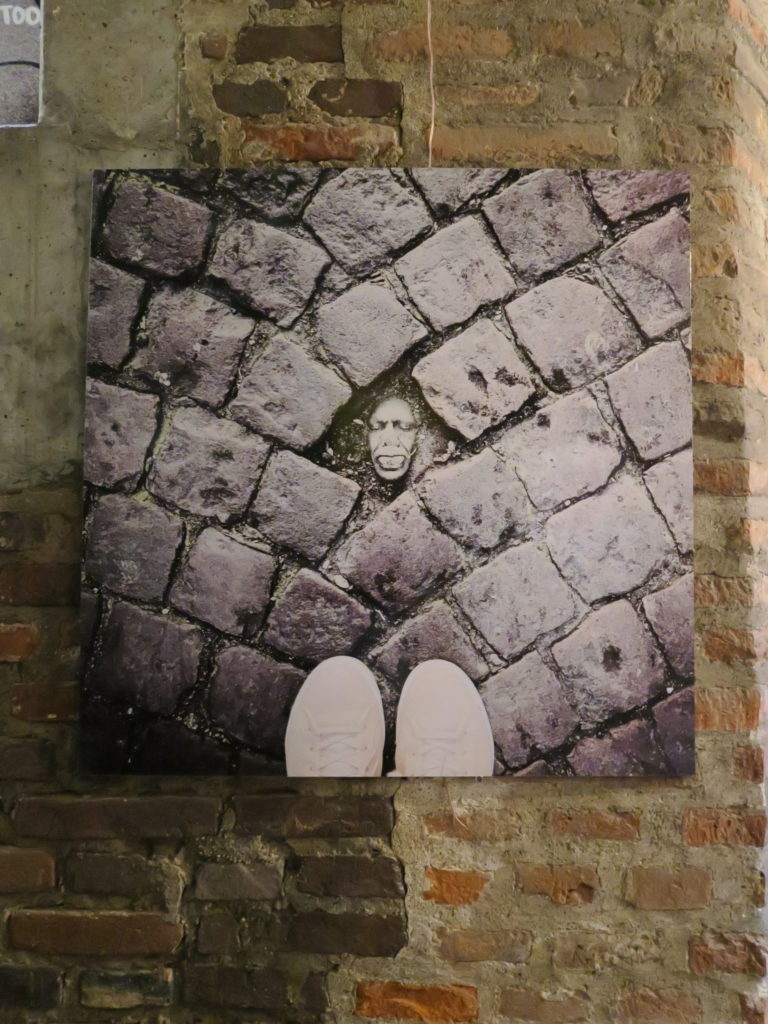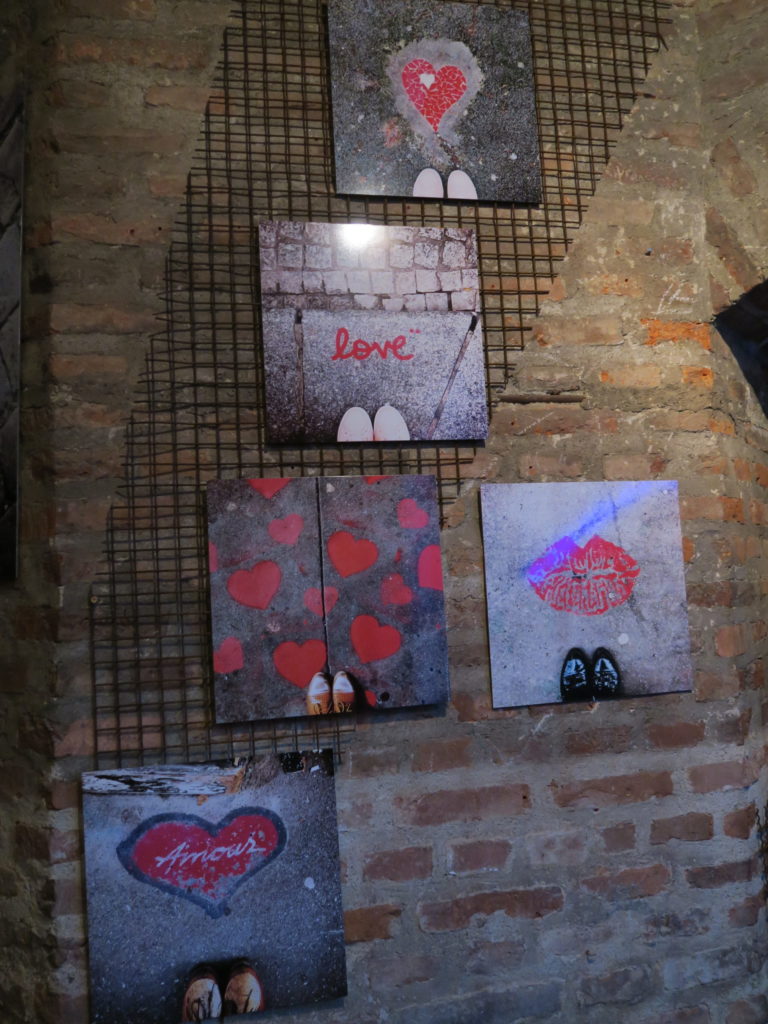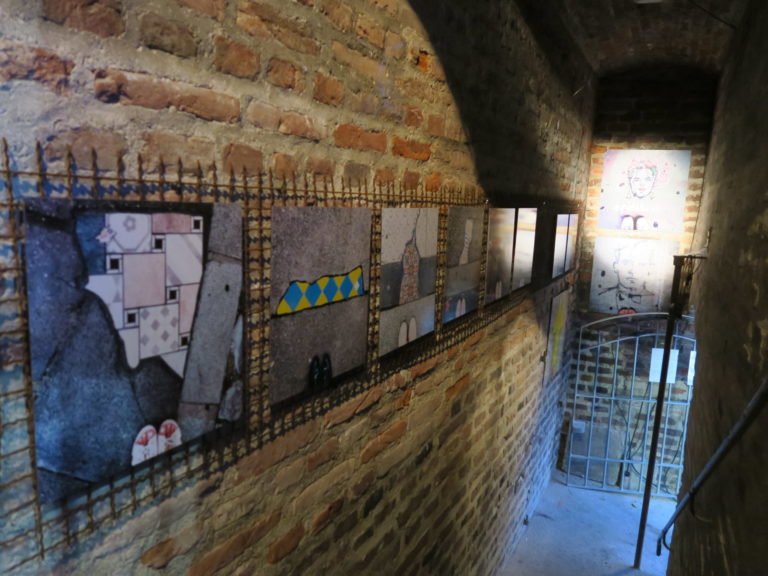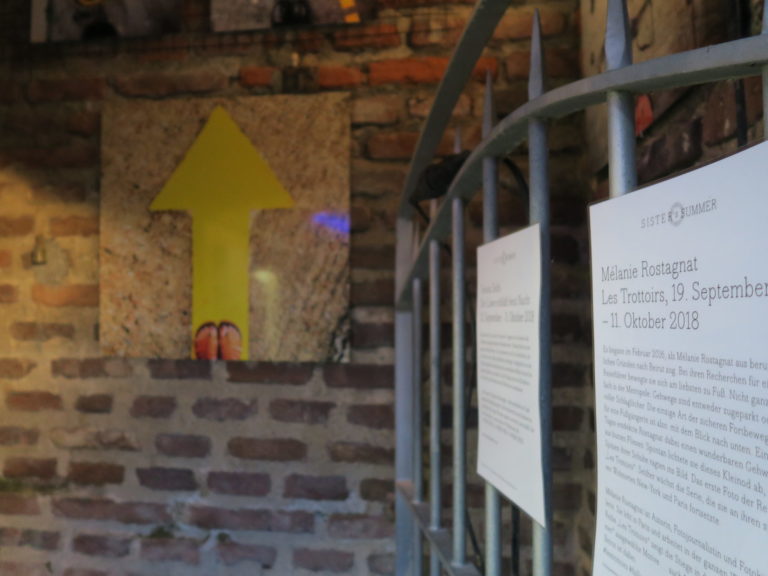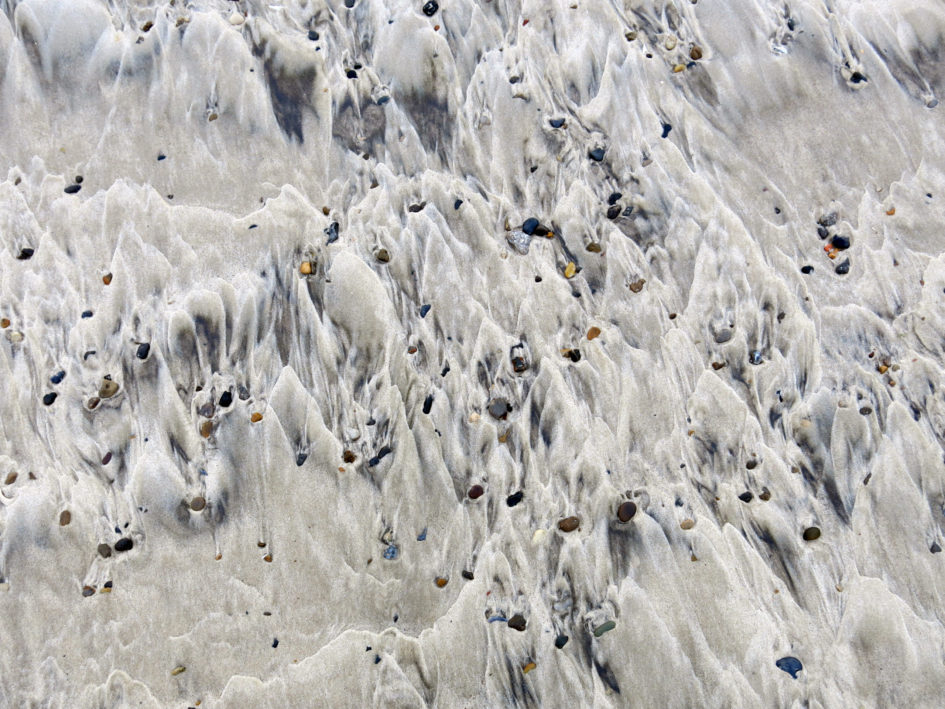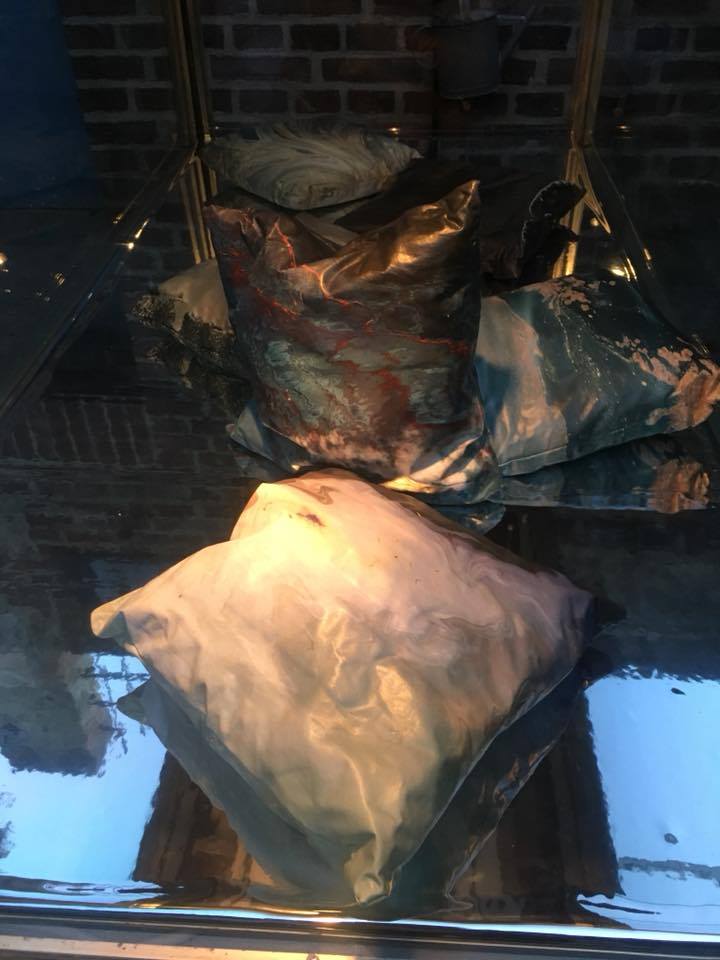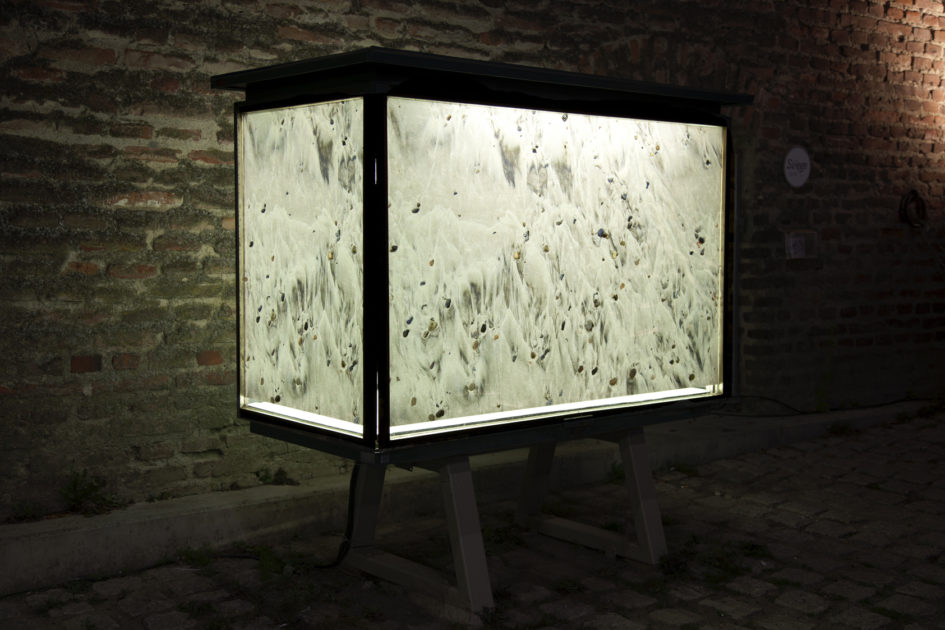Featuring women at the boundaries of art and urban environment
Date: Mai – Octoer 2018
Location: Ulm, Germany
Organisations: Griesbadgalerie (project space), Stiege (project space)
Role: Principal curator, concept, graphic design, fundraising, organization, realization, public relations
Project Team: Petra Schmitt (co-principal curator), Anna Mönnich (curator), Tommi Brem (curator), Erdmuthe Winter (gardener)
Artists: Angela Ender, Kimberly Meenan, Mélanie Rostagnat, Vera Drebusch, Verena Seibt
Supporters: City of Ulm, culture department

As curators of the project spaces Griesbadgalerie and Stiege, we realized that our program in the previous years was dominated by male positions. Acknowledging the under-valuation and under-representation of female artists in the professional art world, we dedicated a whole summer to art made by women while extending our networks with female artists. Following our agenda, we focused on context related art and works that reflect on public space and the urban environment. Design and function of public spaces still widely remain under a male domain. The exhibition provided female perspectives on a variety of topics related to public space. We included different positions from feminist approaches to trans-disciplinary and participatory works. The art space Stiege in a former public staircase was highly visible and frequented by people form all different age groups and backgrounds – an ideal setting for a broad public discourse in the city.
Sister’s summer presented trans-disciplinary, participatory and feminist approaches by women in contemporary art
Lifestream, Angela Ender
Angela Ender finds her materials on the street, at estate sales, or in 1-euro shops. She is interested in shapes, colors, how things feel, what they used to be and where they have already been. Ender’s assemblages begin to grow organically and develop a life of their own.
Kimberly Meenan turns the public art space Stiege into a dream land between fairy tale and 1990’s video game. A princess appears in a magical sleep. Strange plants sprout from every corner. Mysterious treasures emerge and a talking bear gives puzzling advice.
The Grand Quest of Stiege, Kimberly Meenan
The Lion Sleeps Tonight, Verena Seibt
Verena Seibt reflects on the sexualization of the female body and male dominance in the language of images and symbols. … The lion – king of the jungle – symbolically stands at the peak of male power fantasies. But what happens when the lion sleeps. And the lion himself – what does he dream of?
The series Les Trottoires sarted in February 2016 when Mélanie Rostagnat moved to to Beirut Lebanon for professional reasons. When doing research for a travel guide she wrote, she preferred walking as a means of moving around in the city. Thus, in the chaotic metropolis the only way for a pedestrian to move safely is looking down to the ground. This way the artists once discovered a wonderful sidewalk made of colorful tiles. She spontaneously photographed this gem, the tips of her shoes protruding into the picture. This was the first photo in the series “Les Trottoirs”. Afterwards, Rostagnant moved to New York and later returned to her hometown Paris, while the series constantly developed. Mélanie Rostagnat’s gaze remains on the floor, always on the lookout for exciting motifs.
Les Trottoirs, Mélanie Rostagnat
Deep Waters, Vera Drebusch
Vera Drebusch takes a close look at the aesthetics and structures of surfaces. She uses these surface structures as visual elements that she links with contents of personal and social significance: What is below the surface? The materials that Vera Drebusch uses are diverse: Her repertoire includes chocolates and jams as well as self-knotted carpets. In Ulm, she was inspired by the Danube – water was the central subject of the exhibition – whether in video works, as a sound installation or as a decorative oil catastrophe pillow that looks just as beautiful as it is frightening.

